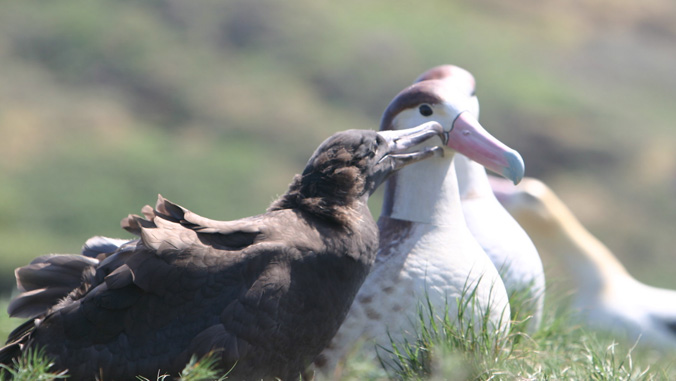
A graduate of the tropical conservation biology and environmental science program at the University of Hawaiʻi at Hilo is launching her career with an impressive portfolio of research data already collected in the field of species protection.
Maya Munstermann and her thesis advisor Matthew Knope, an evolutionary ecologist specializing in speciation and extinction, along with colleagues at Stanford, Tufts, Swarthmore and University of California Santa Barbara, are pioneering a new data-driven approach to assessing extinction risk that “zooms out” from the traditional focus on individual species to examine groups of species that are at risk based on their ecological traits.
A new approach

The new approach in this research looks for global ecological “signatures” of extinction risk in terrestrial vertebrates by both generating and analyzing new and existing large data sets and identifying statistically significant associations between ecological traits and extinction risk.
Using a geographic information system platform to map the global distribution of more than 24,000 threatened terrestrial vertebrate species, Munstermann was able to demonstrate that species with smaller range sizes face a significantly elevated risk of extinction.
In addition to range size, Munstermann categorized each terrestrial species according to its ecological “mode of life,” which encompasses its habitat affinity, mode of locomotion and mode of feeding. Of the 14 ecological traits Munstermann analyzed, she found that brachiating (using your arms to swing from branch to branch), scavenging and aerial species currently face the greatest risk of extinction.
As an example of an important ecological service at risk of being lost, Munstermann cites the scavenging function of species such vultures.
“They make important contributions that we don’t often think about,” said Munstermann. “For example, when cattle die, the carcass lies there, and nobody’s coming by and cleaning it up. The vultures and other scavengers are the ones that eat those carcasses. It’s an extremely important ecological service in terms of disease dynamics and also for nutrient cycling later on.”
Knope agrees that the loss of scavenging species has important implications for ecosystem function.
“The California condor is a poster child species for conservation, but Maya’s work really highlights that it’s not just the condor, but scavenging species as a whole group that are at risk. This high level of endangerment of scavengers means that we may already be facing increases in disease transmission that can have negative impacts on other species, including our own.”
Munstermann and Knope hope that the results will help conservationists and policy makers develop better strategies for targeting species for protection.
“The fact that these ecological traits are at elevated risk of extinction tells us something different than the traditional view of conservation, which focuses on a particular species of concern and tries to protect it,” says Knope. “This is a different lens on the biodiversity crisis. Maya’s work shows that there are entire ecological functions that are at risk of being lost.”
To find out what it takes to document the ecological traits of more than 25,000 terrestrial vertebrate species, read the full story at UH Hilo Stories.
—By Leah Sherwood, a UH Hilo tropical conservation biology and environmental science graduate student

